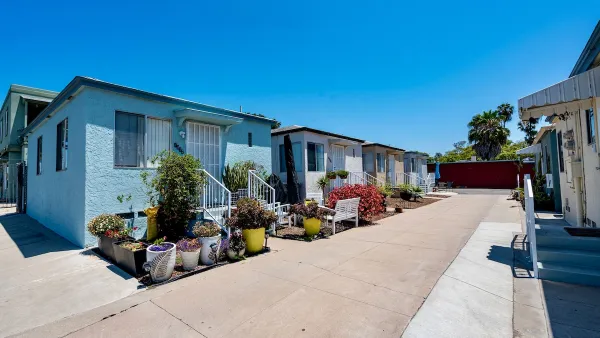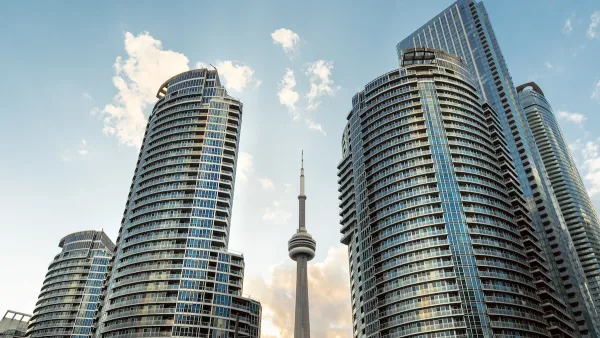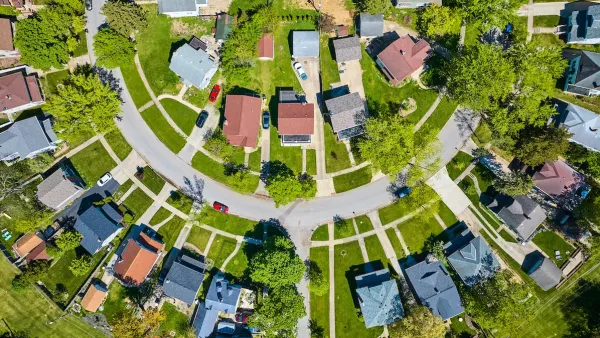Scrambling to grab that elusive “American Dream” of homeownership, millions plunged into the subprime mortgage market to build wealth through appreciation (if not speculation). Pundits cheered as the ownership rate crept up, lauding the pluck of aspirational minority and immigrant families.There’s a reason it is called subprime, though. Lenders offered a smorgasborg of loan “products,” but the bottom line was that they are all very costly for the borrower – often entailing adjustable-rate surprises in the 30 percent or higher range.
Scrambling to grab that elusive "American Dream" of homeownership, millions plunged into the subprime mortgage market to build wealth through appreciation (if not speculation). Pundits cheered as the ownership rate crept up, lauding the pluck of aspirational minority and immigrant families.
There's a reason it is called subprime, though. Lenders offered a smorgasborg of loan "products," but the bottom line was that they are all very costly for the borrower – often entailing adjustable-rate surprises in the 30 percent or higher range.
With prices flat and interest rates creeping up, defaults on subprime loans are skyrocketing, with many borrowers falling behind after just a few months. The lenders who have not yet filed for bankruptcy are stampeding to the exits. A great number of them, though, took billions out of these businesses before they went belly-up.
the real cost will be born by the borrowers, who have no financial cushion. They had hoped that home appreciation would build some wealth. Wages, by and large, have not done the job even with a growing economy.
Their communities will also pay. A lot of those subprime buyers have snapped up the little ranches and Cape Cods in the 1950s inner suburbs, giving a new lease on life to communities that professionals and more affluent buyers have skipped over. Though the houses in these cul de sacs can still look neat, with their hedges and lawns nicely clipped, many of these communities have stagnated, sunk into poverty, or hovered at the tipping point for years. Even modest appreciation would solidify middle-income status for struggling wage earners, but the outlook now is for slippage, possibly long-term price drops.
As the pain spreads, there will be much handwringing and fingerpointing (assuming it does not incite a broader market meltdown as some fear). But the warning bells were rung early and often. No one in Congress, at Freddie Mac, Fannie Mae, or in the mortgage industry should have been unaware of the lax regulation and the likelihood of high levels of defaults. But the pickings were too lush, and the lobbying largesse was spread too thick.
And when things stabilize, the mess will get swept under the rug, because, after all, maybe a few hundred thousand borrowers, or a few million – as in the similarly greed-driven savings and loan collapse in the late 1980s – will be hurt, and they'll be largely invisible because they don't stroll the board rooms of banks or live in the nice neighborhoods of media executives.
There used to be names for this kind of thing, though. One was fraud and the other was usury. Maybe our language will be enriched by them again.

Planetizen Federal Action Tracker
A weekly monitor of how Trump’s orders and actions are impacting planners and planning in America.

Map: Where Senate Republicans Want to Sell Your Public Lands
For public land advocates, the Senate Republicans’ proposal to sell millions of acres of public land in the West is “the biggest fight of their careers.”

Restaurant Patios Were a Pandemic Win — Why Were They so Hard to Keep?
Social distancing requirements and changes in travel patterns prompted cities to pilot new uses for street and sidewalk space. Then it got complicated.

Platform Pilsner: Vancouver Transit Agency Releases... a Beer?
TransLink will receive a portion of every sale of the four-pack.

Toronto Weighs Cheaper Transit, Parking Hikes for Major Events
Special event rates would take effect during large festivals, sports games and concerts to ‘discourage driving, manage congestion and free up space for transit.”

Berlin to Consider Car-Free Zone Larger Than Manhattan
The area bound by the 22-mile Ringbahn would still allow 12 uses of a private automobile per year per person, and several other exemptions.
Urban Design for Planners 1: Software Tools
This six-course series explores essential urban design concepts using open source software and equips planners with the tools they need to participate fully in the urban design process.
Planning for Universal Design
Learn the tools for implementing Universal Design in planning regulations.
Heyer Gruel & Associates PA
JM Goldson LLC
Custer County Colorado
City of Camden Redevelopment Agency
City of Astoria
Transportation Research & Education Center (TREC) at Portland State University
Camden Redevelopment Agency
City of Claremont
Municipality of Princeton (NJ)






























